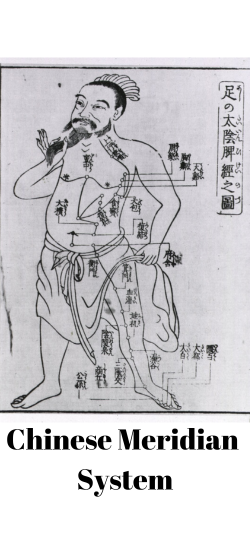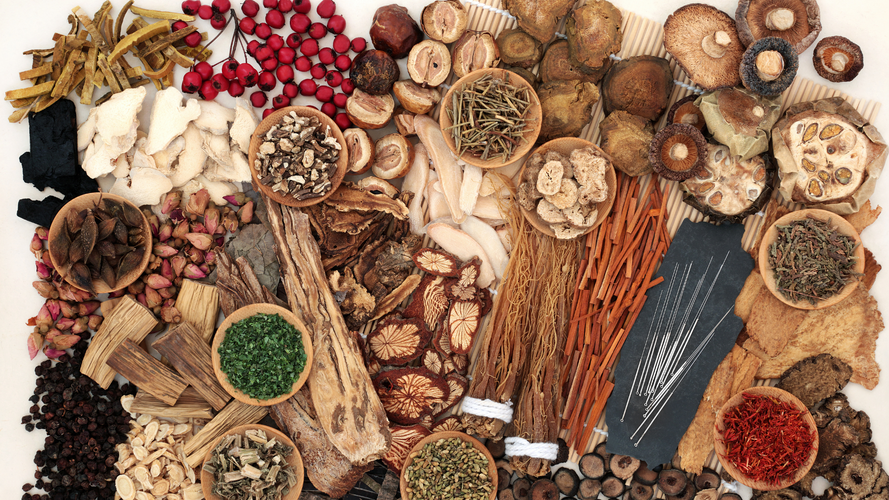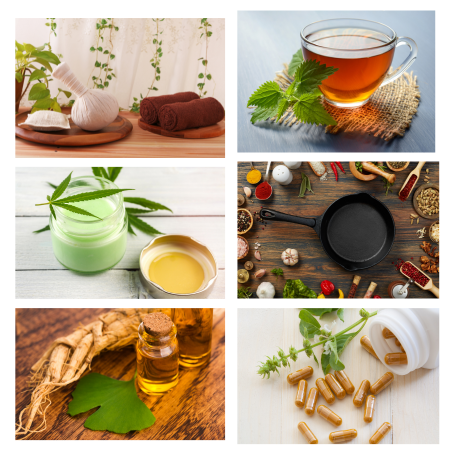The Comprehensive Guide to Chinese Medicine Herbs
Jun 20th 2024
The Comprehensive Guide to Chinese Medicine Herbs
Introduction to Chinese Medicine Herbs
Chinese medicine herbs have been an integral part of Traditional Chinese Medicine (TCM) for thousands of years, used to maintain health, prevent illnesses, and treat various conditions. These herbs are often used in combinations known as formulas, which are tailored to the unique needs of individuals. In this comprehensive guide, we will explore the most commonly used Chinese medicine herbs, their health benefits, and how they can be incorporated into modern wellness practices.
Understanding Traditional Chinese Medicine
TCM is a holistic approach to health that emphasizes balance and harmony within the body. It involves various practices, including acupuncture, tai chi, and herbal medicine. The philosophy behind TCM is that health is achieved by maintaining the balance of yin and yang and the flow of Qi (vital energy) through the body's meridians.
Key Concepts in Traditional Chinese Medicine (TCM)
Traditional Chinese Medicine (TCM) is a holistic healthcare system that has been practiced for thousands of years, emphasizing the balance and harmony of the body's vital energies. It is built on several foundational principles that guide diagnosis, treatment, and overall health maintenance. Here, we explore the core concepts of TCM in detail:
Yin and Yang
- Philosophical Background:
- Yin and Yang are ancient Chinese philosophical concepts that describe how seemingly opposite or contrary forces are interconnected and interdependent in the natural world. They give rise to each other as they interrelate and are fundamental to understanding the dynamics of health and disease.
- Dual Nature:
- Yin represents qualities that are more passive, cooling, and nurturing, associated with elements such as water, earth, and nighttime. It embodies darkness, coldness, and femininity. Examples include the moon, shade, and restful states.
- Yang embodies active, warming, and stimulating qualities, linked with elements such as fire, air, and daytime. It represents light, heat, and masculinity. Examples include the sun, brightness, and activity.
- Balance and Health:
- The balance between Yin and Yang is crucial for maintaining health. TCM believes that an imbalance, where one dominates over the other, leads to disharmony and illness. For instance, excess Yang might result in symptoms like fever and inflammation, whereas excess Yin might lead to coldness and lethargy.
- Dynamic Interaction:
- Yin and Yang are not static but constantly transforming into each other. This dynamic interaction is essential for processes like growth, development, and healing. Health is seen as the ability of the body to maintain this dynamic balance amid external and internal changes.
Qi (Vital Life Force)
- Definition:
- Qi (pronounced "chee") is a fundamental concept in TCM, referring to the vital life force or energy that flows through all living things. It is the energy that powers bodily functions and sustains life, akin to the concept of "prana" in Ayurveda or "vital force" in Western holistic health.
- Functions:
- Qi is responsible for a variety of bodily functions, including movement, protection, transformation, retention, and warmth. It circulates through the body, facilitating processes such as digestion, blood circulation, and immune response.
- Types of Qi:
- Prenatal Qi: Inherited from one’s parents and considered the essence that supports life.
- Postnatal Qi: Acquired through the food we eat and the air we breathe, continuously replenishing the body's energy stores.
- Defensive Qi (Wei Qi): Protects the body from external pathogens and maintains immunity.
- Nutritive Qi (Ying Qi): Circulates with the blood, nourishing the body and sustaining life functions.
- Flow and Blockages:
- Qi flows through specific pathways known as meridians. Health issues arise when Qi is deficient, stagnant, or blocked. TCM treatments like acupuncture, herbal medicine, and Qigong aim to balance and enhance the flow of Qi.

Meridians (Channels)
- Pathways of Energy:
- Meridians are an extensive network of channels through which Qi flows throughout the body. They connect various organs and systems, facilitating communication and energy transfer, much like rivers distributing water in a landscape.
- Primary Meridians:
- TCM identifies twelve primary meridians, each associated with specific organs and functions. For example, the Heart Meridian influences emotional and cardiovascular health, while the Lung Meridian governs respiratory functions.
- Extraordinary Meridians:
- In addition to the primary meridians, there are eight extraordinary meridians that serve as reservoirs of Qi and blood. They regulate the flow of energy and connect the primary meridians, playing a crucial role in maintaining overall health.
- Diagnostic and Therapeutic Role:
- Practitioners of TCM diagnose health conditions by assessing the flow of Qi in these meridians. Techniques like acupuncture and acupressure target specific points along the meridians to restore the balance and smooth flow of Qi, promoting healing and relief from symptoms.
Five Elements (Wu Xing)
- Philosophical Foundation:
- The Five Elements theory is a fundamental TCM concept that describes the interactions and relationships between different phenomena. The elements—Wood, Fire, Earth, Metal, and Water—represent not only physical substances but also qualities, behaviors, and processes in the natural world and the human body.
- Element Characteristics:
- Wood: Symbolizes growth, flexibility, and renewal. It is associated with the liver and gallbladder, and the spring season.
- Fire: Represents warmth, transformation, and activity. It is linked with the heart and small intestine, and the summer season.
- Earth: Embodies stability, nourishment, and balance. It corresponds to the spleen and stomach, and the late summer season.
- Metal: Reflects contraction, strength, and structure. It is connected with the lungs and large intestine, and the autumn season.
- Water: Denotes fluidity, adaptability, and depth. It is related to the kidneys and bladder, and the winter season.
- Organ Systems and Relationships:
- Each element corresponds to specific organs and bodily functions, influencing them through complex relationships. For example, the liver (Wood) influences the heart (Fire) and is supported by the kidneys (Water). These interrelationships guide TCM practitioners in diagnosing and treating various health conditions.
- Balancing Elements:
- TCM aims to maintain harmony among the Five Elements, ensuring that they support and regulate each other appropriately. Imbalances among these elements can lead to health issues. For instance, an excess of Wood may lead to liver problems, while a deficiency in Earth might result in digestive disorders.

Popular Chinese Medicine Herbs
1. Ginseng (Ren Shen, 人参)
Health Benefits:
- Energy Boosting: Ginseng is known for its ability to enhance physical and mental energy.
- Immune Support: It strengthens the immune system, making the body more resistant to infections.
- Stress Reduction: Helps in reducing stress and improving overall mood.
- White Ginseng: White ginseng is made by peeling and drying the raw ginseng root under the sun or in a controlled environment. It is not subjected to any heat or steaming processes.
- Red Ginseng: Red ginseng undergoes a more complex process. The raw ginseng root is steamed at high temperatures before being dried. This steaming process gives the ginseng its characteristic red color.
Usage: Ginseng can be consumed as tea, in powder form, or as an ingredient in various herbal formulas.
2. Astragalus (Huang Qi, 黄芪)
Health Benefits:
- Immune Enhancement: Astragalus is widely used for boosting the immune system.
- Anti-Inflammatory: It helps reduce inflammation and supports recovery from injuries.
- Heart Health: Known to improve cardiovascular function and reduce cholesterol levels.
Usage: Commonly used in soups, teas, and as a supplement in capsule or powder form.
3. Goji Berry (Gou Qi Zi, 枸杞子)
Health Benefits:
- Antioxidant-Rich: Goji berries are high in antioxidants, which help protect cells from damage.
- Vision Support: They are believed to improve eye health and vision.
- Anti-Aging: Known for their anti-aging properties and ability to improve skin health.
Usage: Goji berries can be eaten raw, added to teas, or used in cooking.
4. Licorice Root (Gan Cao, 甘草)
Health Benefits:
- Detoxification: Licorice root helps in detoxifying the body and reducing inflammation.
- Respiratory Health: It is effective in soothing sore throats and relieving coughs.
- Digestive Aid: Supports healthy digestion and helps alleviate stomach issues.
Usage: Used in teas, decoctions, and as a flavoring in various herbal formulations.
5. Rehmannia (Di Huang, 地黄)
Health Benefits:
- Blood Tonic: Rehmannia is used to nourish and invigorate the blood.
- Kidney Support: It helps in supporting kidney function and maintaining overall vitality.
- Hormonal Balance: Used to balance hormones, especially in women.
- Sheng Di Huang (Raw Rehmannia Root):
- Focus: Primarily used for conditions related to excess heat and cooling the blood.
- Indications: High fever, thirst, rashes, mouth ulcers, and various bleeding conditions.
- Formulas: Commonly found in formulas like “Di Huang Yin Zi” for cooling and nourishing the blood.
- Shu Di Huang (Prepared Rehmannia Root):
- Focus: Mainly used for nourishing and tonifying deficiencies, particularly in blood and yin.
- Indications: Fatigue, pale complexion, weak back, and symptoms of aging or chronic illness.
- Formulas: Often included in tonifying formulas such as “Liu Wei Di Huang Wan” for kidney and liver yin deficiencies.
Usage: Commonly included in herbal formulas, available in raw, prepared, or extract form.
6. Schisandra (Wu Wei Zi, 五味子)
Health Benefits:
- Liver Health: Schisandra supports liver detoxification and regeneration.
- Adaptogenic Properties: Helps the body adapt to stress and improves mental clarity.
- Respiratory Support: Beneficial for lung health and reducing respiratory ailments.
Usage: Used in teas, tinctures, and as an ingredient in various health supplements.
How to Use Chinese Medicine Herbs
1. Teas and Decoctions
Chinese herbs are often consumed as teas or decoctions, which involve simmering the herbs to extract their active compounds. This method is particularly effective for releasing the beneficial properties of roots and barks.
2. Powder and Capsules
For convenience, many Chinese herbs are available in powdered form or as capsules. This allows for easy incorporation into daily routines without the need for extensive preparation.
3. Topical Applications
Some herbs are used in topical applications, such as poultices or ointments, to treat skin conditions, reduce pain, and promote healing.
4. Culinary Uses
Certain Chinese herbs can be used in cooking to enhance the nutritional value and therapeutic benefits of meals. Ingredients like goji berries and astragalus are commonly added to soups and stews.
Modern Applications of Chinese Herbs
In today’s world, Chinese medicine herbs are being increasingly integrated into modern wellness practices. They are used not only for their traditional health benefits but also as natural alternatives to conventional medications. Many people turn to Chinese herbs to address issues such as chronic pain, stress, immune support, and overall wellness.
Integration with Western Medicine
Chinese medicine herbs can complement Western medical treatments, offering holistic support for patients dealing with various health issues. They provide a natural way to enhance healing, support the immune system, and improve quality of life.
Conclusion
Chinese medicine herbs offer a wealth of health benefits and have been used for centuries to maintain health and treat various conditions. Whether used individually or as part of a comprehensive herbal formula, these herbs provide a natural and effective way to support overall wellness. By understanding their properties and applications, you can harness the power of Chinese herbs to enhance your health and vitality.



